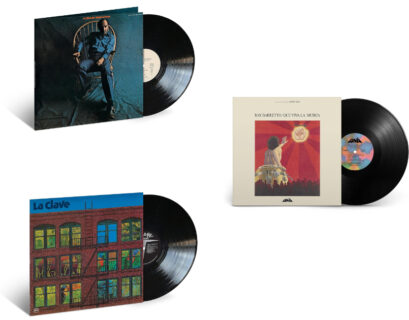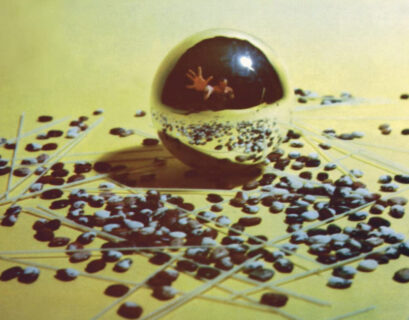It’s the time of year for saving money!
Initially, I didn’t really stop to think about the “why” of a new reissue of Nina Simone’s classic, timeless 1959 debut when I first heard about it happening. All I knew was (a) I was excited about it and (b) I wanted to hear it and (c) I wanted to review it.
So here we are at release time and the spiffy new Barnes & Noble exclusive blue vinyl version of Jazz As Played In An Exclusive Side Street Club (known by many simply as Little Girl Blue) arrived from the good folks at BMG for me last week and I’m quite pleased.
But before I get into the audiophile nitty gritty stuff, I had to take a step back and revisit that “why” question. I mean, this isn’t really any particular anniversary (the album was released 62 years ago in February 1959). Nina was born in February so its not really a birthday celebration reissue. There are some Nina Simone reissues of her later works happening from the folks at Universal Music so perhaps that may have inspired this reissue. Still, I wondered if there was something else to consider.
Then I remembered about a phenomenon I’d written about in the past which may have impacted this global reissue: Little Girl Blue desperately needed to be officially reissued to counter the many inferior grey market imports that have been flooding the market place. Many of these are of dubious origin, often with irrelevant cover art, possibly made from CDs or other less optimal sources.
I’ve seen these things in numerous music stores and every time I come across one it makes me cringe because I know someone is getting ripped off. Actually several entities are getting ripped off including the artist’s estate, the label which owns the masters presently and the unknowing consumer buying questionable product.
A quick search of Amazon confirmed that many of these unofficial release are no longer there which is great! An equally quick search of Discogs shows many of these odd releases are still around, however. Just click on any of these following names to jump to pages on the kinds of records I’m talking about here: DOL, Primativ Sounds, Jazz Wax, Doxy, ZYX Music, Jazz Images, Not Now Music, Jazztwin, Green Corner, Sélection FNAC and even another DOL variant!
I’ve written about this problem with grey market and pirate editions flooding the market before (click here and here to read).
On the plus side, the likely good sounding Analogue Productions version from 2015 has escalated in value and is commanding some hefty collector’s coin in its own right.
So back to my question of “why,” I suspect that simply the time was ripe and right for a good quality reissue to happen that is reasonably priced so that fans aren’t ripped off.
Now you can get a high quality reissue of Little Girl Blue pressed on 180-gram black vinyl (or lovely clear blue if you choose the Barnes & Noble exclusive edition). The vinyl mastering was done by Kevin Gray at Cohearant Audio and the music was mastered by Grammy winning mastering engineer Michael Graves.
While I am not sure if this was made from a digital or analogue source, I have found the new edition to be very enjoyable. Given Kevin Gray’s involvement one would assume they were working from a tape source, hopefully a master tape. I compared it to the best of my two original Bethlehem pressings and this new edition sounds overall fuller and rounder, especially on the low end. The high end is brighter as well but not in any sort of off-putting manner.
My blue vinyl copy of Little Girl Blue is well centered and quiet. It does have a slight bump warp in it but nothing that affected play. I only bring this up for newer vinyl collectors who I have seen getting upset on social media when they get a new record with a minor warp — really, folks, it is ok and in most cases it is not an issue. I have some VERY warped records which play fine and sound fantastic. So, don’t freak out too much if you have a minor one. Chances are yours will be fine. That said, I hate warps too and if it is a bad warp, then by all means you should return it to the store you bought it in. But some little warps are just not worth fretting about — I get more upset about off center pressed albums which does impact the music playback very negatively.
The cover art to my new copy of Little Girl Blue is very close to one of my originals. It never was an especially clear photo to begin with and the album did go through several revisions in design back in the day with alternate text treatments and such. For example, here is a picture of my best copy with the “Vivid Sound” variant cover design. I’m pleased that they even made sure that the labels are as period accurate as possible (the main difference being that it has BMG copyright details at the bottom of the label instead of “Distributed By King Records” as on the originals). They even got the label color quite close (which doesn’t always happen on reissues like this). Someone was paying attention to the little details which matter!
The new edition comes crafted in high quality cardboard with paste-on graphics like the original. The LP comes housed in a clear plastic audiophile-grade inner-sleeve. This new edition also comes with extra liner notes inside featuring a compelling new essay written specifically for this release by Yale Professor and author of the acclaimed book Liner Notes for the Revolution, Daphne A. Brooks.
If you have an old copy of Little Girl Blue and can’t find (or afford) a good condition original or one of the fancy Analogue Productions editions, this new reissue is a great high quality option you should consider picking up. Essential listening.




















Great article and a nice read. I do, however, not appreciate your continued bashing of reissues on labels like DOL, Primativ Sounds, Jazz Wax, Doxy, ZYX Music, Jazz Images, Not Now Music, Jazztwin, Green Corner and Sélection FNAC. Whether their reissues are below standard or not is irrelevant; fact of the matter is that it’s completely uncalled for to name their reissues “unofficial”. Nearly all of the labels that you mention operate from the European Union and there, I’m sorry to tell you, the copyright laws differ quite significantly from those in the US. A lot of pre-1965 music (yes, even material from The Beatles) has entered the public domain in Europe and therefore you can basically reissue everything that you want. Again, the audio quality of those reissues may not be up to par, but I’d appreciate it if you’d stop calling them “unofficial”, ’cause in Europe they’re not at all “unofficial” and there they’ve been reissued and re-released according to the current rules and regulations based on expired copyrights and/or public domain status. I’m professionally related to some of the label owners, including the one from ZYX Music (a label that has been around for decades) and Sélection FNAC (I truly hope that you know that FNAC is by far the largest Amazon-style outlet in France and not some bootleg factory) and I can tell you that they’re not a bunch of crooks or criminals. Are they making money reissuing this material? Absolutely. Are their reissues “unofficial”? Positively not. According to current EU copyright law and public domain regulation, their reissues are as official as they can get. I just don’t see why you even bother referring to those labels here on Audiophile Review anyway. We, the audiophile addicts, already know that the reissues of those labels are below standard. But they are not “unofficial” under EU law. Saying that creates the idea that their reissues are bootlegs or otherwise illegal copies and they’re not. Period. On the bright side: those cheap reissues may reach an audience of youngsters that may not have the dough to buy expensive name-label copies, so in a way these labels also give people to option to discover this music all over again, which is a plus. They may eventually find their way to the high quality reissues that we read about here.